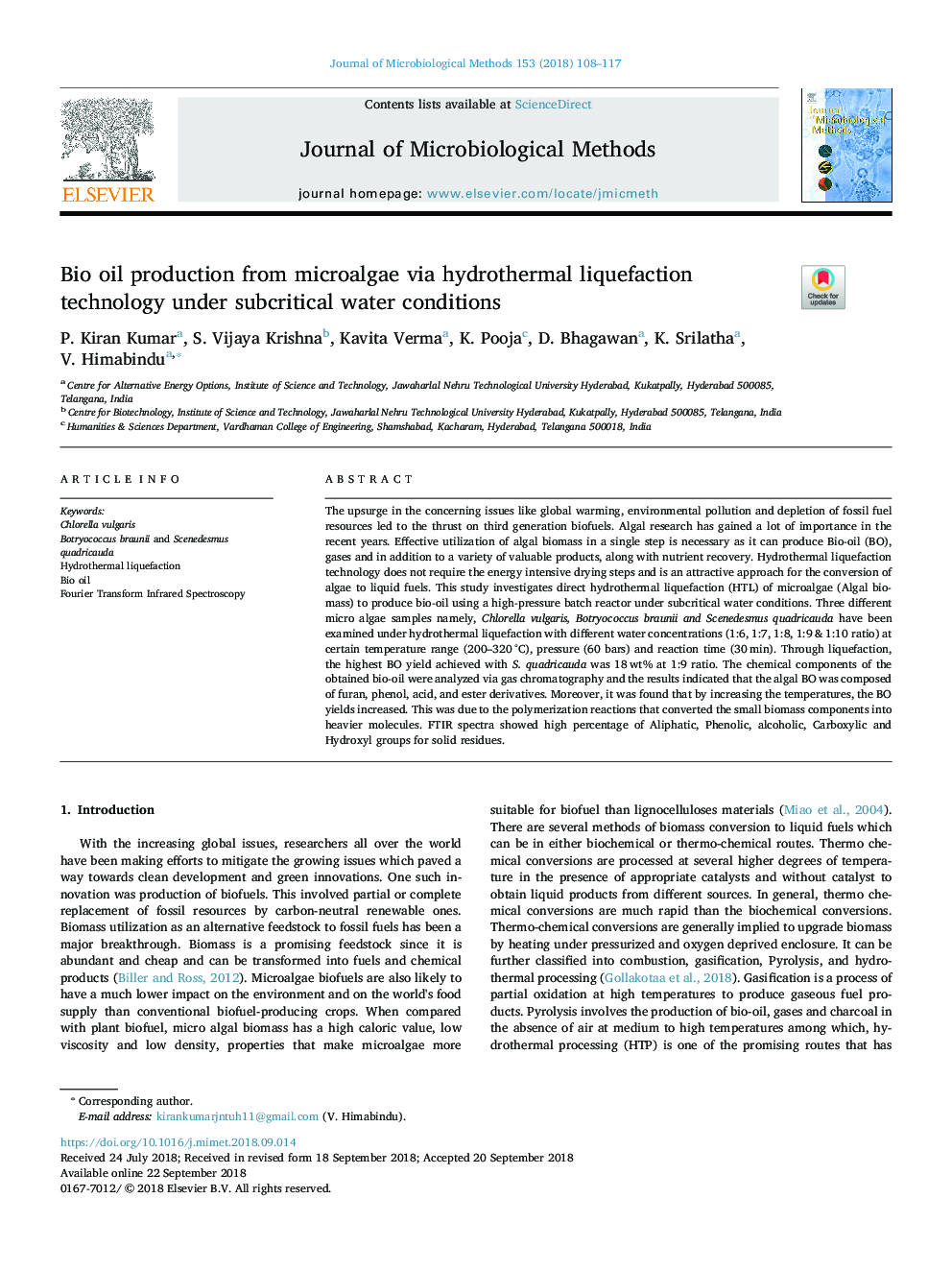| کد مقاله | کد نشریه | سال انتشار | مقاله انگلیسی | نسخه تمام متن |
|---|---|---|---|---|
| 11030847 | 1646134 | 2018 | 10 صفحه PDF | دانلود رایگان |
عنوان انگلیسی مقاله ISI
Bio oil production from microalgae via hydrothermal liquefaction technology under subcritical water conditions
ترجمه فارسی عنوان
تولید روغن بیولوژیکی از میکروالگوها از طریق تکنولوژی روانکاری هیدروترمال در شرایط آب زیرین کریستالی
دانلود مقاله + سفارش ترجمه
دانلود مقاله ISI انگلیسی
رایگان برای ایرانیان
کلمات کلیدی
موضوعات مرتبط
علوم زیستی و بیوفناوری
بیوشیمی، ژنتیک و زیست شناسی مولکولی
بیوتکنولوژی یا زیستفناوری
چکیده انگلیسی
The upsurge in the concerning issues like global warming, environmental pollution and depletion of fossil fuel resources led to the thrust on third generation biofuels. Algal research has gained a lot of importance in the recent years. Effective utilization of algal biomass in a single step is necessary as it can produce Bio-oil (BO), gases and in addition to a variety of valuable products, along with nutrient recovery. Hydrothermal liquefaction technology does not require the energy intensive drying steps and is an attractive approach for the conversion of algae to liquid fuels. This study investigates direct hydrothermal liquefaction (HTL) of microalgae (Algal biomass) to produce bio-oil using a high-pressure batch reactor under subcritical water conditions. Three different micro algae samples namely, Chlorella vulgaris, Botryococcus braunii and Scenedesmus quadricauda have been examined under hydrothermal liquefaction with different water concentrations (1:6, 1:7, 1:8, 1:9 & 1:10 ratio) at certain temperature range (200-320â¯Â°C), pressure (60 bars) and reaction time (30â¯min). Through liquefaction, the highest BO yield achieved with S. quadricauda was 18â¯wt% at 1:9 ratio. The chemical components of the obtained bio-oil were analyzed via gas chromatography and the results indicated that the algal BO was composed of furan, phenol, acid, and ester derivatives. Moreover, it was found that by increasing the temperatures, the BO yields increased. This was due to the polymerization reactions that converted the small biomass components into heavier molecules. FTIR spectra showed high percentage of Aliphatic, Phenolic, alcoholic, Carboxylic and Hydroxyl groups for solid residues.
ناشر
Database: Elsevier - ScienceDirect (ساینس دایرکت)
Journal: Journal of Microbiological Methods - Volume 153, October 2018, Pages 108-117
Journal: Journal of Microbiological Methods - Volume 153, October 2018, Pages 108-117
نویسندگان
P. Kiran Kumar, S. Vijaya Krishna, Kavita Verma, K. Pooja, D. Bhagawan, K. Srilatha, V. Himabindu,
